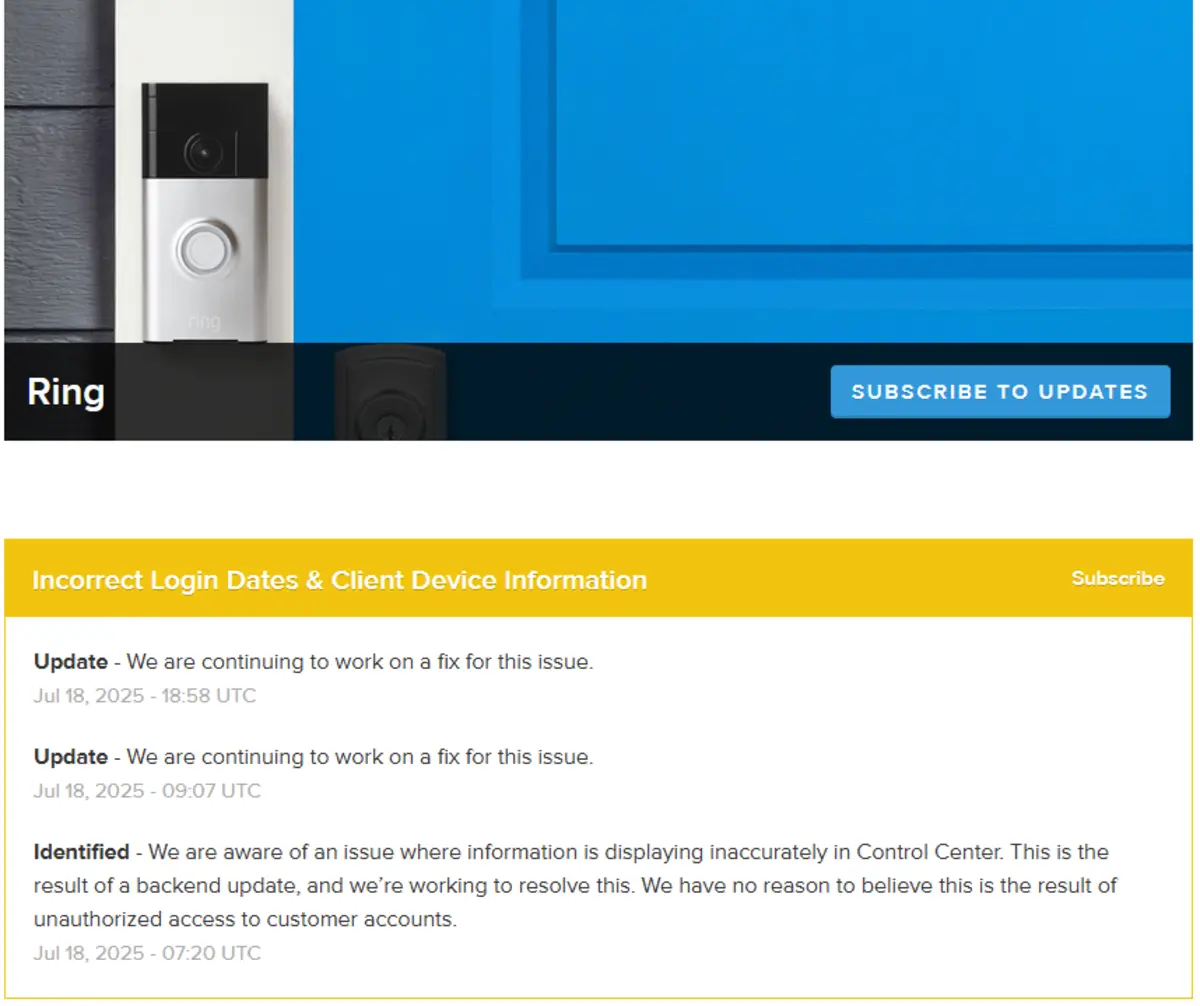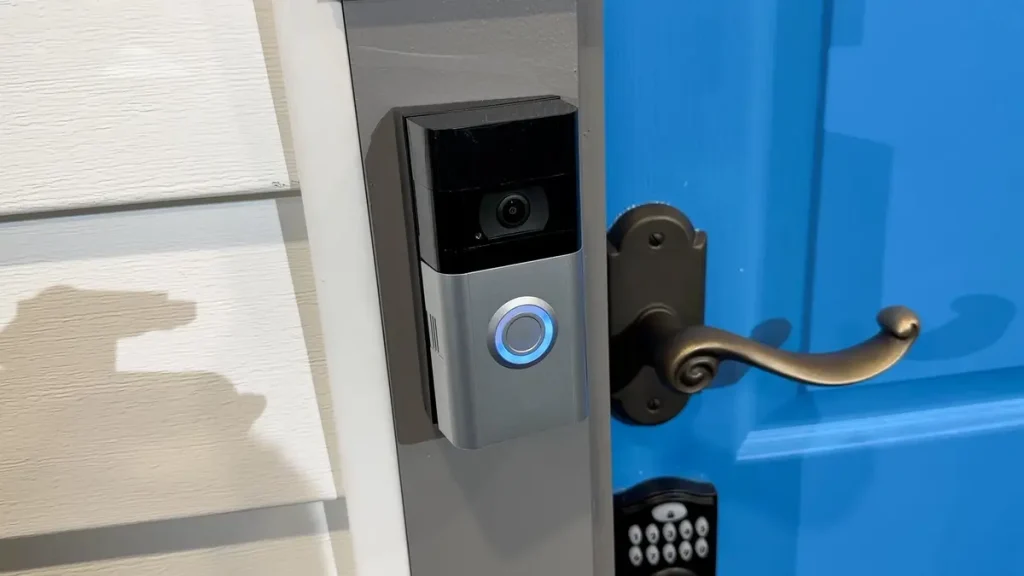Earlier this week, hundreds of Ring users reported suspicious login entries dated May 28, 2025, purportedly from unknown devices like Chromebooks, old phones, and Safari browsers. Videos on social platforms went viral, warning homeowners their Ring cameras were hacked and urging immediate action to secure accounts.
What’s Really Going On? Ring Cameras Hacked Incident
Contrary to hacking fears, Ring—a subsidiary of Amazon—confirmed the incident was not a data breach. Instead, it was the result of a backend software bug causing prior device login records to incorrectly display as having occurred on May 28, 2025. On its official channels, Ring stated:
“We are aware of a bug that incorrectly displays prior login dates as May 28, 2025”
In detail, older clients previously verified on users’ accounts were mistakenly relabeled with that date, and some saw device names defaulting to “Device name not found”.

On Reddit, numerous posts described eerie experiences: one user recounted seeing 14 devices—some never owned—while another suspected the glitch could stem from “credential stuffing” or automated attacks. Many expressed frustration over the lack of communication from Ring, stating they’d received no alerts or context until viral videos emerged.
Cybersecurity analysts caution that whether due to a hack or a glitch, such incidents shake consumer trust in smart home platforms. Analyst Rachel Lin told Economic Times, “People are putting cameras in their most private spaces… even a glitch like this shakes their confidence in the system”
Ring’s Guide for Users Experiencing The Glitch
Ring is actively rolling out a fix and advises customers to:
-
Sign out all old or unused devices via Ring Control Center.
-
Change passwords immediately and enable two-factor authentication (2FA).
-
Consider enabling end-to-end encryption (E2EE) for cameras and doorbells—though note this may disable Alexa integrations and video sharing features.
This episode underscores the broader risks tied to smart home ecosystems. Ring’s systems have experienced past vulnerabilities—from critical flaws in Wi-Fi security to incidents where hackers hijacked doorbells and cameras to issue threats . The company faced an FTC fine of $5.8 million in 2023 over privacy breaches stemming from employee access to customer videos.
As smart cameras and voice assistants increasingly permeate households, each glitch or unauthorized access event raises serious privacy and security questions—especially when they’re used in intimate spaces.
What Users Should Do Now
Here’s a step-by-step checklist to safeguard your Ring setup:
| Action | Reason |
|---|---|
| Sign out all devices | Removes outdated or unknown entries |
| Change password + enable 2FA | Prevents unauthorized access |
| Enable E2EE | Protects video data, though feature-limited |
| Stay updated | Monitor Ring’s status page for fix updates |
| Consider device hygiene | Periodically audit and remove old connections |
Even non-security glitches can undermine confidence, making a proactive approach critical.
Ring is working to improve communication around technical issues. While this specific incident appears benign, transparency is key. Smart home users expect prompt alerts and clear explanations—not silence followed by viral panic.
Whether you’re a long-time Ring user or a prospective buyer, this situation reinforces the need for robust security practices, including regular audits, firmware updates, and strong authentication.
The recent Ring login scare serves as a stark reminder: whether from a bug or breach, anomalies involving home security systems carry significant emotional weight. This event may not signal a hack, but it highlights the importance of trust, transparency, and vigilance in managing smart home devices. By following recommended steps and staying informed, users can help protect both their homes and their peace of mind.


